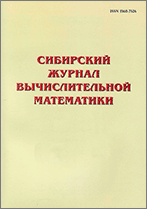|
Study of superexponential growth of the mean partile flux by Monte Carlo method
G. Z. Lotovaab, G. A. Michailovba
a Institute of Computational Mathematics and Mathematical Geophysics of Siberian Branch of Russian Academy of Sciences, Novosibirsk, Russia
b Novosibirsk State University
Abstract:
A comparative analysis of two algorithms for estimation of weighted mean particle flux - «by particles» and «by collisions» - is made on the basis of test problem solving for a single-speed particle propagation process with scattering and multiplication in a random medium. It is shown that the first algorithm is preferable for a simple estimation of the mean flux and the second one, for estimation of the parameters of a possible superexponential flux growth. Two models of the random medium are considered: a chaotic «Voronoi mosaic» and «a spherically layered mosaic». For a fixed mean correlation radius, the superexponential growth has been stronger for the layered mosaic.
Key words:
statistical simulation, time asymptotics, random media, particle flux, Voronoi mosaic.
Received: 18.11.2022
Revised: 23.12.2022
Accepted: 10.04.2023
Citation:
G. Z. Lotova, G. A. Michailov, “Study of superexponential growth of the mean partile flux by Monte Carlo method”, Sib. Zh. Vychisl. Mat., 26:3 (2023), 277–285
Linking options:
https://www.mathnet.ru/eng/sjvm844 https://www.mathnet.ru/eng/sjvm/v26/i3/p277
|

| Statistics & downloads: |
| Abstract page: | 55 | | Full-text PDF : | 2 | | References: | 17 | | First page: | 4 |
|




 Contact us:
Contact us: Terms of Use
Terms of Use
 Registration to the website
Registration to the website Logotypes
Logotypes








 Citation in format
Citation in format 